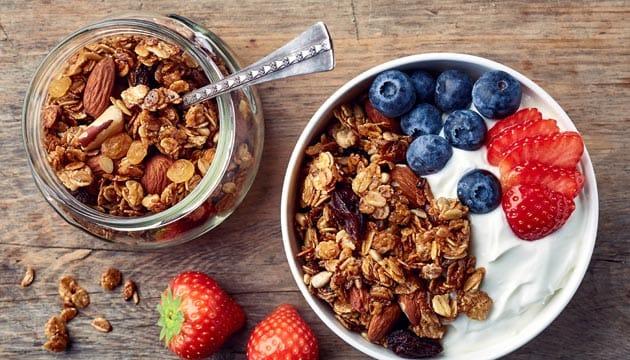Japanese cuisine is sophisticated, varied, incredibly good and creative.
There are Japanese restaurants in Italy that know how to offer the real Japanese cuisine, but clearly, the right place to eat real Japanese is Japan.
In addition to the best known dishes, such as Sushi, Onigiri, Sashimi and Tempura, there are dishes that we have seen a million times in cartoons and that really exist.
Japanese cuisine: what to eat?
Japanese cuisine is made of fresh ingredients: mainly eggs, vegetables, fish and rice. Meat is used but only in internationally derived dishes. Kobe beef, bred with special feed and beer, is considered a bit like our T-bone steak. It has a marbled meat that the thin veins of fat make it very tender.
Japanese cuisine has no course concept: dishes are served all at once and are eaten in no particular order.
Below are 10 Japanese dishes you absolutely must try in Japan.
RAMEN
Ramen is a soup with everything in it: fried meat that remains inexplicably crispy in the broth, seaweed, vegetables, eggs. Here are the best places to eat Ramen in Italy.
SEE ALSO: 13 THINGS YOU NEED TO KNOW BEFORE GOING TO JAPAN
DORAYAKI
Doraemon eats them by pulling them out of his marsupial pouch. Dorayaki, after which the Japanese cartoon character is named, are pancakes made of a kind of sponge cake and filled with a sweet azuki bean sauce.
KATSUDON
Katsudon is a fried and breaded slice of pork served with eggs and various seasonings on a hot rice dish.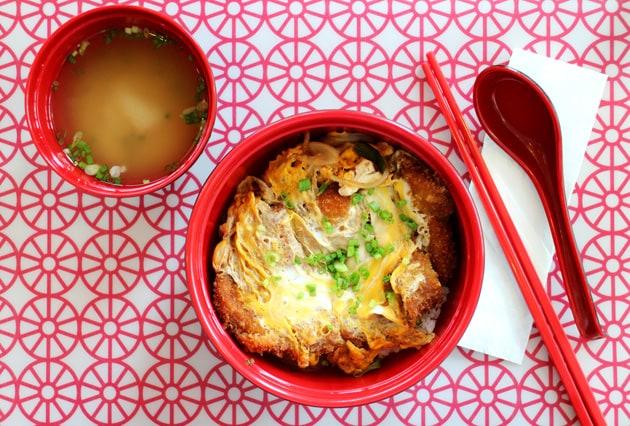
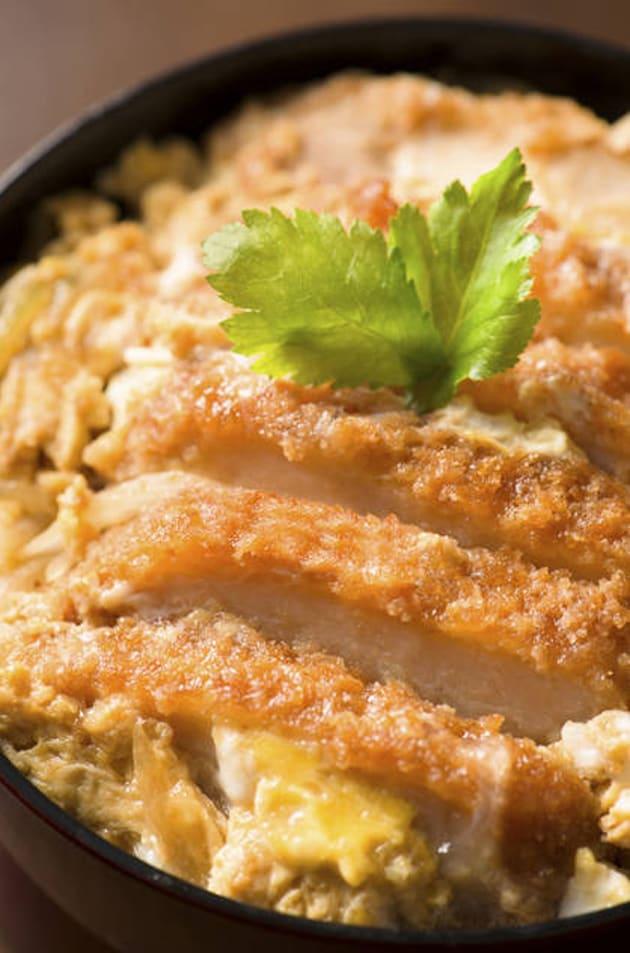
MOCHI
Mochi are typical Japanese rice cakes. They are very pretty to look at, but a little chewy to eat.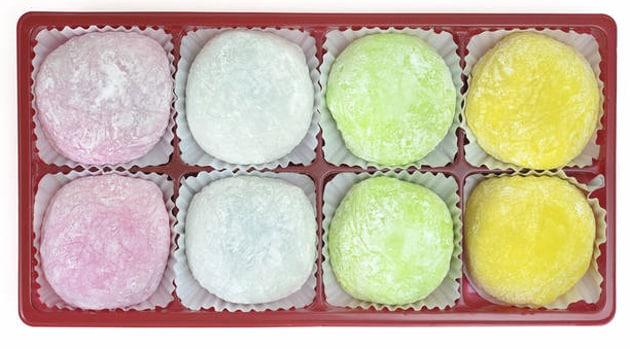
NABEMONO
Nabemono is a winter dish that is prepared directly at the table over a traditional pot of boiling Dashi broth. Diners take the raw ingredients and cook them quickly in the broth.
TAIYAKI
Taiyaki is a fish-shaped cake. To our Western eyes it looks like a rustic savoury cake, but it is actually a sweet filled with chocolate or azuki jam.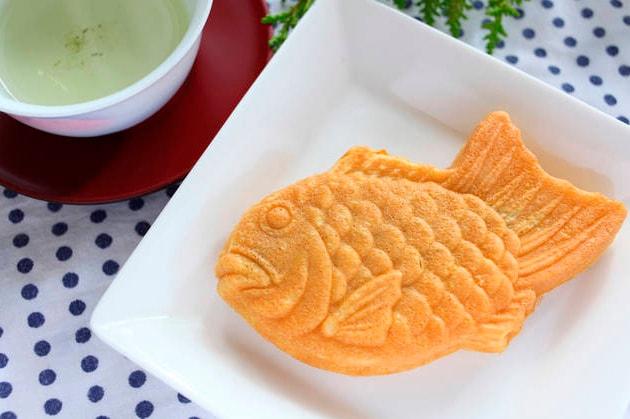
What do people eat for breakfast in Japan?
In Japan, breakfast is one of the most important meals of the day. Rice and boiled fish, seaweed and tofu are eaten.
Among the main dishes you will find at breakfast in Japan are nattō (fermented soya beans with a sticky consistency) seasoned with soy sauce or mixed with hot boiled rice, rice-filled nori seaweed and tamagoyaki, the Japanese sweet or savoury omelette, hollow or filled.
The Japanese breakfast is something to try at least once for anyone travelling in Japan. Those who sleep in ryokan (traditional Japanese hotels) will have an unforgettable experience because breakfast is a real ritual in these places.
What do the Japanese eat for dinner?
Dinner is the other main meal in Japanese cuisine along with breakfast. At dinner, one sits at the table with the whole family and calmly eats the main dishes of traditional Japanese cuisine.
The typical Japanese dinner menu follows the philosophy of ichijū sansai (one soup and three dishes): the main course is rice or a soup served with three side dishes.
Japanese cuisine pays maniacal attention to the variety of dishes, colours and shapes.
One serves nimono (something boiled), sumono (something with vinegar), yakimono (something grilled), namamono (something raw), mushimono (something steamed), agemono (something fried) and tsukemono (something pickled).
Eating in Japan: how much does it cost?
Prices for eating in Japan can vary a lot from one area to another and from the type of restaurant you choose.
In Japanese fast food restaurants you can spend very little, even the equivalent in Yen of less than 10 euros to eat.
Traditional fast food restaurants are very good places to eat in Japan. They are very small, family-run places where only one type of food (even elaborate) is cooked but served quickly because it is always being prepared. In these places you can eat a plate of ramen or soba all day, in some cases, in the cities, even all night.
What are the names, prices and ingredients of Japanese dishes
Name of dish | Ingredients | Average price |
|---|---|---|
Sushi and Sashimi | Rice and fish | 2000 - 3000 Yen |
Tempura | Vegetables and Prawns | 2000 - 3000 Yen |
Ramen | Noodles, broth | 500 - 1500 Yen |
Tonkatsu | Cutlet | 800 - 1000 Yen |
Soba and Udon | Buckwheat noodles, broth | 800 - 1500 Yen |
Okonomiyaki | Flour, vegetables and meat | 1000 - 1500 Yen |
Yakitori | Chicken | 100 - 150 Yen each |
Shabu Shabu | Meat for cooking | 3000 - 4000 Yen |
Takoyaki | Octopus | 500 Yen |
Donburi | White rice and fish | 800 - 1000 Yen |
Eating in Japan: tips
Choosing a good place to eat in Japan is not difficult. The quality is usually high, although not always cheap. Below are a few tips that may nevertheless be useful.
Don't choose randomly from the menu: sitting at a kaiten you can watch the dishes and their preparation and choose what you like.
Sauces should always be soaked on the side of the fish and not the rice
Do not overdo it with wasabi
Temaki (sushi rolled in seaweed in the shape of a cone) should be eaten with the hands like an ice cream cone
Eat the various types of sushi in one bite, at most two if the pieces are very large, to prevent them from breaking and losing all their contents.
Japanese dishes: most famous recipes
The most famous dishes of Japanese cuisine require fresh ingredients, spices and Japanese sauces. Most dishes are complicated to prepare and often require time and dedication.
Here are some Japanese recipes to try out at home and some of the most popular dishes: ramen, soba, tempura, onygiri, sushi, maki, sashimi, yakitori.
Japanese tableware
In Japan, people eat with chopsticks, the tapered, pointed sticks used at the table and in the kitchen for frying.
Japanese tableware is usually made of ceramic or glass and lacquer. A set of Japanese tableware to try your hand at the gastronomy of the Rising Sun at home includes tea and sake glasses, bowl sets and dishes for sushi and sashimi.
Japan
